Animals with Big Head does not mean they are smarter. However, They developed big heads over the course of evolution as they play significant roles in nature such as head-butt with each other and also against predators, charging and so on.
So, In this article, We shall look at Animals with Big Heads that are chosen from across the world along with the roles they play with pictures .
Table of Contents
Animals With Big Heads :
Sperm whale

The sperm whale, the largest toothed whale, and the largest toothed predator, also a third deepest diving mammal, belongs to the genus Physeter and is found in all deep oceans, the Arctic and the Antarctic.
A mature male sperm whale has a massive head that can measure about one-third of its body length. Whereas its body measures about 52 feet (16 m) in length and occasionally reaches 68 feet (20 m).
Interestingly, the cerebrum of the sperm whale is the largest among mammals. Its brain is the largest brain currently known that weighs between 7.8 kilograms (17 lb) to 9.2 kilograms (20 lb). Thus, In comparison, It is more than five times heavier than a human brain, as its volume is about 8,000 cm3-that’s really huge.
Surprisingly, Its forehead contains an oil-filled sac meant for echolocation. Thus they can communicate through echolocation and vocalization about 230 decibels loud.
Spermaceti is a waxy-like substance produced by the spermaceti organ in its head that has much more value. That’s why it is named ‘Sperm Whale’.
Angler fish

An anglerfish is a carnivorous fish and also a bony fish in the Order Lophiiformes that are known to occur worldwide.
What makes them famous is their large head and luminescent organ. Usually, They have large heads with fang-like inward positioned teeth that prevent the escape of their prey from the mouth. Its large mouth has flexible bones enabling them to open its mouth wide enough to swallow the prey that is as much as twice the size of its own body.
To attract the prey these fishes have a luminescent organ called the esca located at the tip of their dorsal fins, which is a modified fin to lure the prey by wiggling the esca to make it look like prey to the other aquatic creatures as it produces light.
Tarsier
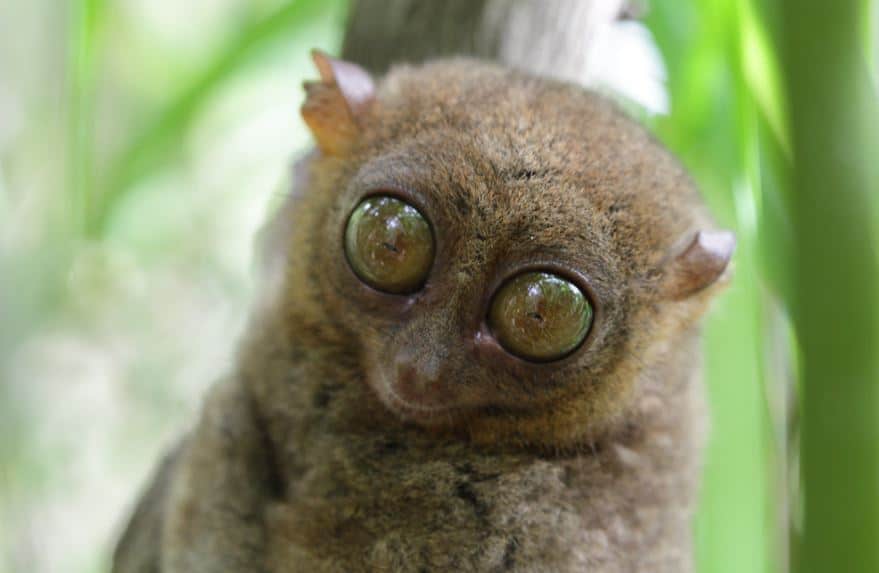
Tarsier, including the Western tarsier and Philippine tarsier, is a small-sized primate in the family Tarsiidae and is found in Southeast Asia, the Philippines, and other places.
It has a relatively large head that is round and can be rotated up to 180°, large membranous ears that keep constantly in motion, disproportionately large bulging eyes as it adaptations of nocturnal animals, is a mammal with the largest eye-to-body ratio in size, and a short body.
Some studies suggest they are suicidal as they are found to bang their delicate heads against tree trunks during stress. Therefore, If they are kept in zoos, then they should not be touched and need to be provided silent environments for them to live stress-free.
Octopus
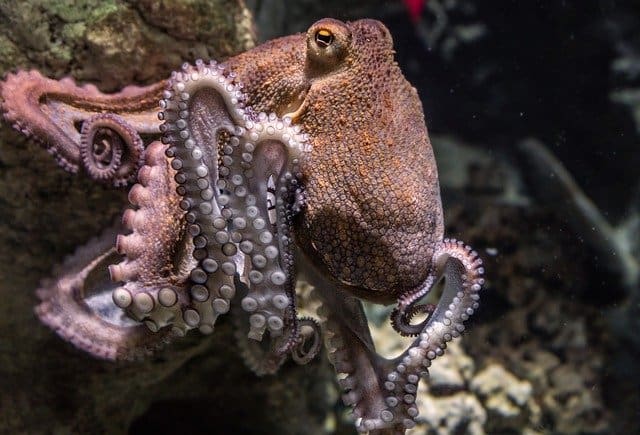
Octopus is soft-bodied molluscs in the order Octopoda and also an invertebrate that is found in every ocean, coasts of the United States. and other places.
When we observe them, We can notice mainly its head and foot that has given them the name ‘Cephalopod’ which literally means head-foot in greek.
Its head includes the mouth, brain, eyes, and other parts. Its eyes are located at the top of its head and possess monocular vision. A large and hollow mantle is fused to the back of the head along with vital organs in it that are collectively known as the visceral hump.
Interestingly, They have nine brains, However, eight of which are actually located in their eight corresponding feet or arms.
Gorilla

Gorilla, including the eastern gorillas, the western gorillas, and others, is a ground-dwelling herbivorous mammal, also a great ape that belongs to the genus Gorilla. These are the stronger apes found in central Sub-Saharan Africa and other places.
These are giant animals with muscular bodies and possess relatively large heads. Its head is large, especially the sagittal crest, because they have to support the jaws that are adapted to a herbivorous diet as they keep on chewing many plant materials continuously.
Why should you not look a gorilla in the eyes? Looking into their eyes, or staring them into their eyes gives them a sign of you are ready to challenge or take the fight against them. Especially, If you do this to a silverback gorilla, they’ll immediately turn into an aggressive mode in order to defend themselves and to show their dominance.
Hippo
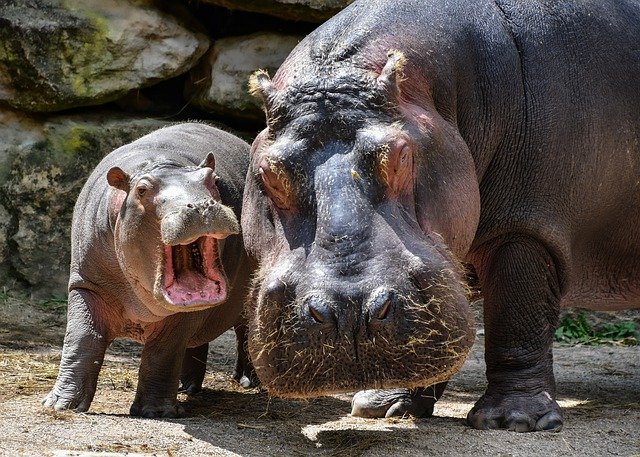
The hippopotamus, including common hippo and pygmy hippopotamus, also known as the river hippopotamus, is a large mammal adapted for semi-aquatic life and is also a third-largest type of land mammal that is found in East Africa, Sahara, West Africa, and other places.
They have really large heads or skulls that house a space of about 421 cm3 for their brain, large and powerful jaws, eyes, nose, relatively small ears that close when submerged. They raise their heads frequently on the surface of the water to take breaths.
Surprisingly, they are one of the best mammals well adapted for aquatic life as their eyes, nose(nostrils), and ears are located at the top of their head that they used to sense the outer environment and also to breathe.
Lion(male)
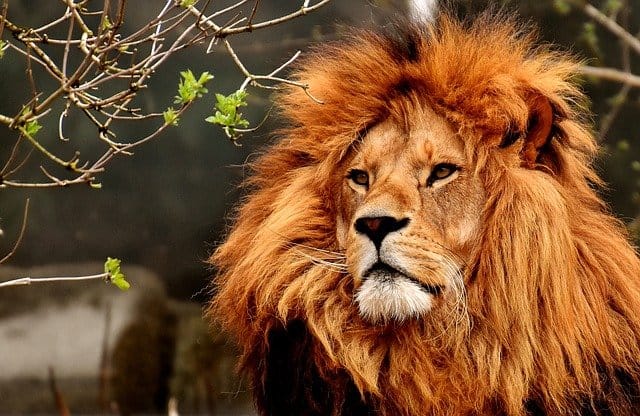
The lion is a diurnal carnivorous mammal that belongs to the genus Panthera, Family Felidae, Order Carnivora, and are found in Saharan Africa, Asia, and other places.
Lion, especially male lions have a slightly larger head, that even looks big due to the mane which is the most recognizable and adorable feature of these species and is also important in identifying or distinguishing their sex because the female lions lack it. Adult Lion with a mane is more attractive to females as it represents a sign of physical strength, health, and dominance. Interestingly, Its head has a space of about 244 cm3 meant for the brain.
To express pleasure, caring, and greeting, the lions will lick heads and necks, also rub their heads with each other.
Koala (marsupial)
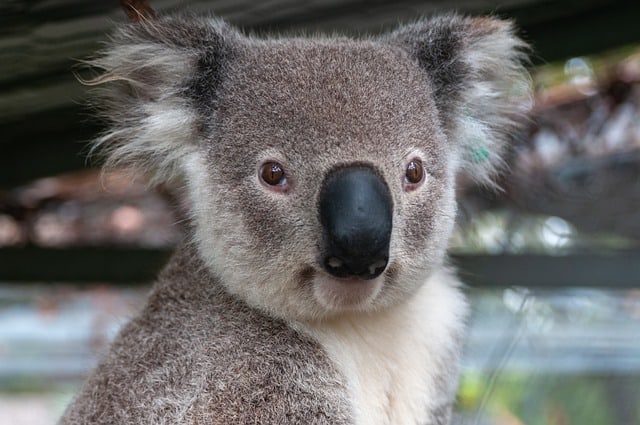
The koala, also known as the koala bear, is an arboreal, herbivorous, and nocturnal marsupial that belongs to Genus Phascolarctos, Family Phascolarctidae, and is found in Australia and other places such as zoos as well.
One can identify them as they have large heads with a small brain as compared to other animals with respect to the brain in proportion to their body weight. It has relatively smaller eyes with less advanced eyesight, a large spoon-shaped nose black in color, and fluffy ears that are relatively larger that is necessary as they are used for communication and socialization with other Koalas.
Its head is large but houses a smaller brain that is about only 19.2 g on average- that’s really interesting. However, the smaller the brain, the less energy it consumes.
Hammerhead bat

The hammer-headed bat, also known as a hammer-headed fruit bat or big-lipped bat, is the largest bat found in the African continent and is distributed in West Africa, Central Africa.
Among the many types of bats, these hammer-headed bats are special as they have relatively larger heads, especially males have large and box-shaped heads or skulls with a massive snout, very large eyes, a large and powerful tongue with backward directed papillae that aids better in extracting juice from fruits.
Surprisingly, Males of the hammer-headed bats have large box-shaped heads while females have narrower snouts, making them look like the face of a fox.
Panda
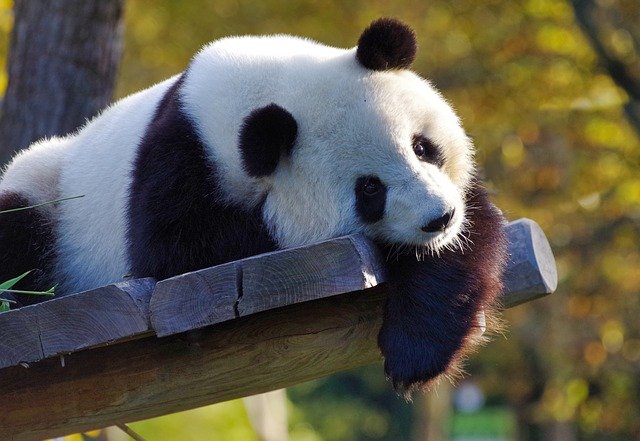
A giant panda, also called the panda bear, is actually a bear that belongs to the Genus Ailuropoda and Family Ursidae and is found in South Central China and other places.
These bears have large heads with round faces all covered by black-and-white fur, a patch of black fur on their ears, a patch of black fur surrounding their eyes, and white-colored fur on the face.
Interestingly, the giant panda has a round face because of its powerful jaw muscles that are connected to the skull.
Musk ox

The muskox, also considered or written as musk ox and musk-ox, is a herbivorous mammal belonging to the Genus Ovibos and Family Bovidae that is found in the Arctic region.
An identifying characteristic of muskox is their big heads and bigger muscular body. Like most of the members of the bovine family, it also possess horns located on their large heads which are usually long, curved with a sharp tip and are not usually shed. Interestingly, In these muskoxen both males and females have horns, but it’s most useful for males as they fight through it with each other.
During the rivalry between males, they will collide or hit their heads against each other heads which is a powerful collision that is almost comparable to the collision between two cars with a speed of 50 kilometers per hour – that’s a really huge impact on each other. However, They continue to charge each other until one bull gives up.
Beluga whale

A beluga whale, also known as sea canary and white whale, is a cetacean belonging to the Genus Delphinapterus, Family Monodontidae, and is found in the Arctic Ocean, Alaska, Russia, Canada, and Greenland.
One of the interesting things about them is they have big foreheads that are squishy heads. A distinctive bulbous structure on their heads plays an important role in echolocation as it contains an echolocation organ in it which is called the melon. Thus, Using these melons they can communicate and focus sounds in specific directions.
Interestingly, They are able to change the shape of their head to process the echolocation by blowing air in it.
Orangutan(Male)
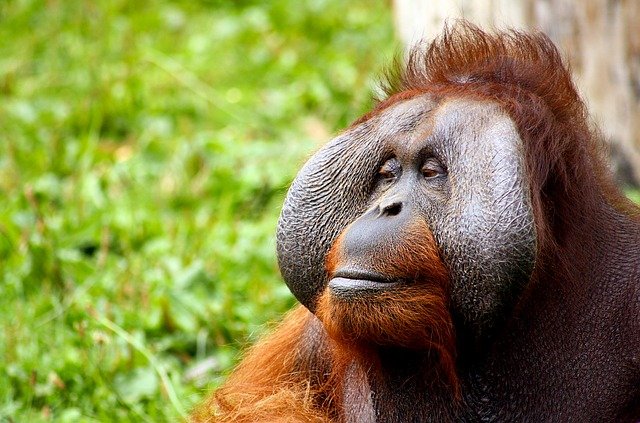
Orangutans, including Sumatran orangutan and Bornean orangutans, is a great ape belonging to the Genus Pongo, Family Hominidae and is found in Indonesia, Malaysia, Southeast Asia, Borneo and Sumatra.
An adult male orangutan has a larger head with a large, round-shaped face than a female along with a throat sac used to make loud calls for communication. Its large face is actually due to the development of the cheekpad called flanges that happens usually when they reach maturity. Those young males which don’t have cheekpad look like a female orangutan.
Why do orangutans have such big faces? Male orangutans have big faces to attract females and to show dominance in their groups.
Owl

Owl is a nocturnal bird of prey in the order Strigiformes that belongs to the carnivorous diet and is found across the world.
One may frighten, especially if they encounter them at night because of their large heads and big eyes that stare at you awkwardly.
They have a large and broad head, ear tufts, and eyes that are fixed in eye sockets, meaning they can’t rotate their eyeballs as we do, So they are adapted to turn the whole head about 270 degrees while not making any damage to blood vessels or tendons.
Owl’s eyeballs are large enough to see them through their ear openings -that’s cool. Right.
African elephant

An Elephant, including the African bush elephant, the African forest elephant, and the Asian elephant, is the largest current living land mammal on the earth that belongs to the Family Elephantidae, Order Proboscidea, and is found in the regions of Africa, Asia, and other places as well.
Of course, elephants are animals with large heads as they are the largest mammal on the earth. Its large head includes a large cranium that houses the brain, a long proboscis called a trunk that is used primarily for breathing, two large tusks, and two large fan-shaped ears used for regulating a constant body temperature and communication, especially when they are aggressive by opening them.
Among mammals, It is the largest land animal with the largest brain that weighs about 5 kg -that’s really huge, and is about 3-4 times larger than the human brain.
Bison
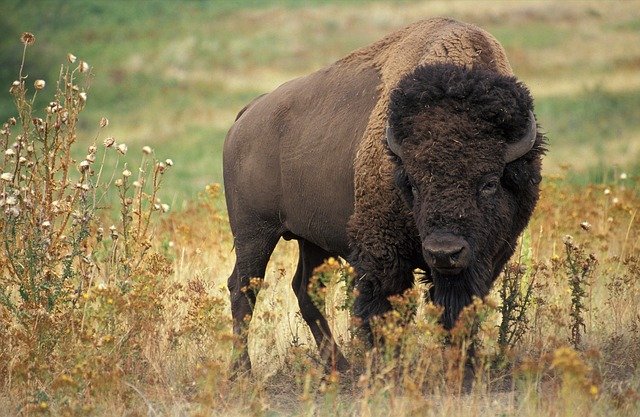
A Bison is a large herbivorous mammal belonging to the genus Bison, Family Bovidae, and Order Artiodactyla that is found in the United States, Canada, Mexico, Europe, Poland, Belarus, Russia, and Ukraine.
Like most herbivores, these bison have a large head, large skulls weighing about 6 Kg, powerful jaws meant for grazing plant matter, and two small-sized horns about 2 feet that are curved in shape. Its large heads are optimally high above the ground that are helpful in grazing, and uncovering snow deposited vegetation to eat, and also fighting against carnivorous predators.
Its head is large with a thick skull that they use to fight through their heads and horns with other bison.
Blue whale
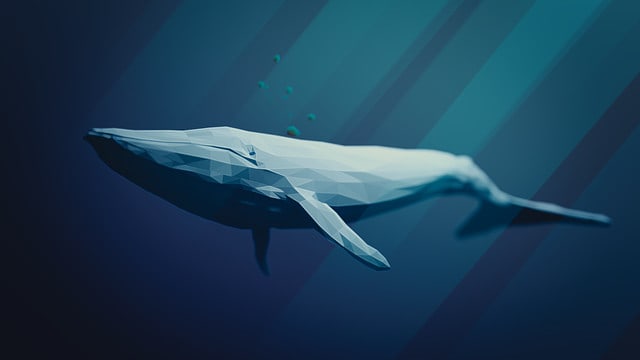
The blue whale, including North Pacific blue whales, North Atlantic blue whales and other species of blue whale, is an ocean mammal that belongs to the Genus Balaenoptera, Family Balaenopteridae, and is found in all oceans across the world except the Arctic region.
As the largest discovered animal that has ever existed, They have large heads that are broader and flatter heads which house a big brain of about 6-7 kg that’s about 0.007% to their entire body weight.
Interestingly, Their large brains have a highly convoluted cerebral cortex.
Green humphead parrotfish
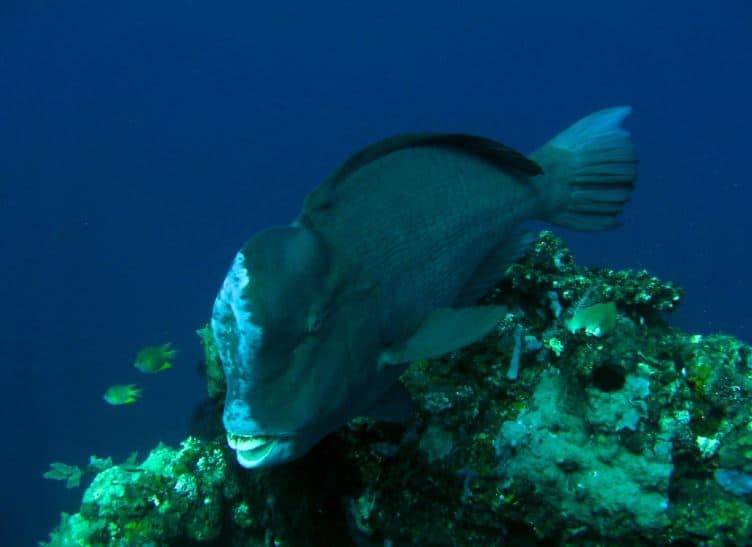
A green humphead parrotfish, also known by many names such as giant parrotfish, bumphead parrotfish, humphead parrotfish, double-headed parrotfish, buffalo parrotfish, is the largest currently known species of parrotfish.
These fishes belong to the Family Scaridae, and Order Labriformes and are found in Indian and Pacific Oceans, the Red Sea, Great Barrier Reef, and Australia.
What surprises in the species of parrotfish is their head, especially the large heads of the green humphead parrotfish. As you can notice through the picture of them, the protrusion part of the head is actually a forehead part from the head.
Fortunately, These Bumphead Parrotfish can be identified easily because of their distinct hump present on the head of adults.
Read more : Animals With Tusks !
What animal has the biggest head in the world?
A dinosaur called Pentaceratops dinosaur was found to have a large skull that is about 10 feet in height.
Pentaceratops is a herbivorous dinosaur that lived about 75 million years ago that is around the Cretaceous Period. They have a massive body weighing about 5 metric tons, a length of about 20 feet (6 m), a short nose horn with two long brow horns.
